More than 250 attendees gathered in Phoenix, Arizona, to participate in the 2007 DOE Solid-State Lighting (SSL) Program Planning Workshop on January 31-February 2, 2007. Lighting industry leaders, fixture manufacturers, researchers, academia, trade associations, lighting designers, energy efficiency organizations, and utilities joined DOE to share perspectives on the rapidly evolving SSL market. The workshop provided a forum for building partnerships and strategies to accelerate technology advances and guide market introduction of high efficiency, high-performance SSL products.
Getting SSL to Market
The fourth annual DOE SSL workshop focused on "Getting SSL to Market." DOE SSL Program Manager James Brodrick kicked off the workshop by highlighting recent industry announcements about significant efficacy breakthroughs and new products on the market. Brodrick described DOE's national strategy to push SSL technology and the market to the highest efficiency and the highest lighting quality. DOE's lab-to-market strategy draws on key partnerships with the SSL industry, research community, standards setting organizations, efficiency groups, utilities, and others. DOE support acts as a catalyst, and these partnerships guide DOE planning for SSL R&D and market introduction activities.
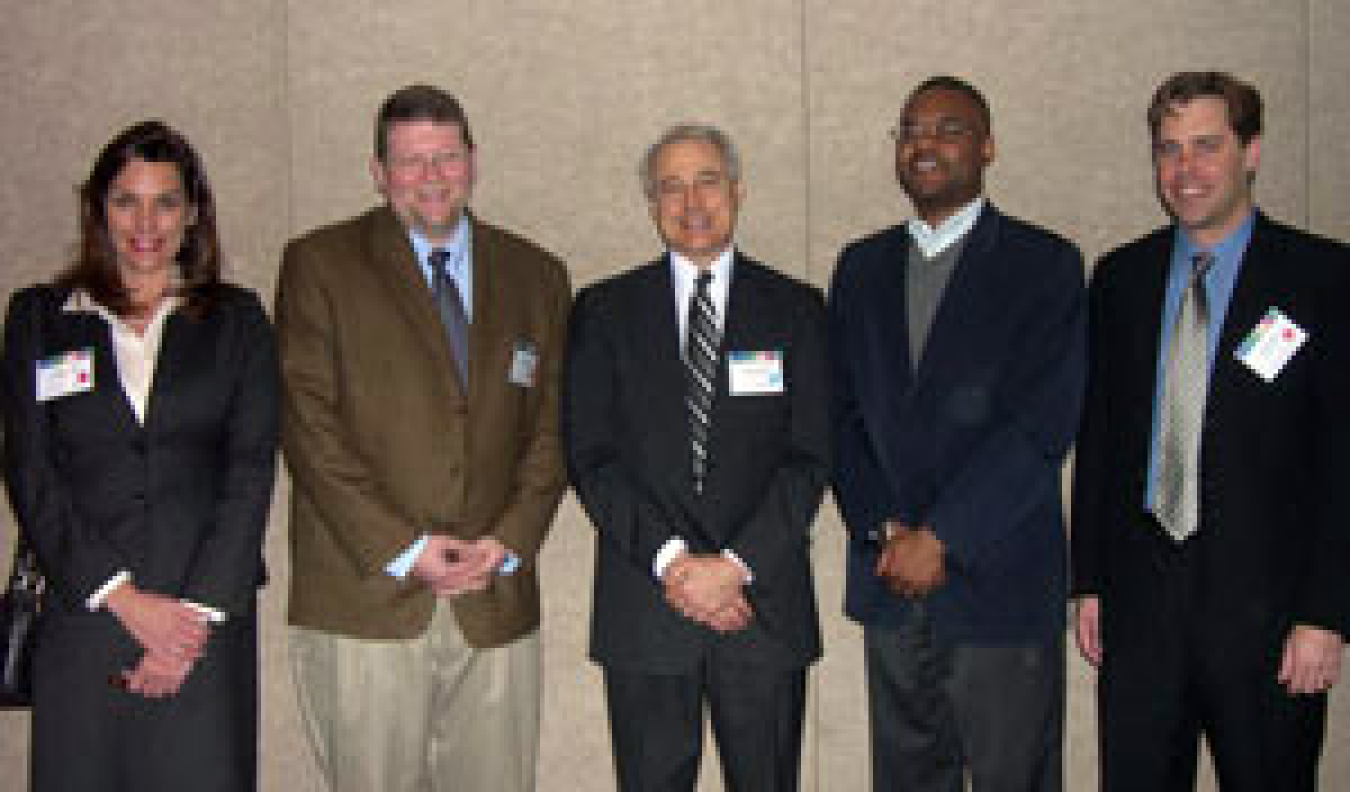
Pictured, left to right: Cynthia Merrell, LLF; Jeff Quinlan, Acuity Brands Lighting; James Brodrick, DOE; David Elien, GELcore; Paul Thurk, ARCH Venture Partners.
Industry Leaders Share Strategies for Getting SSL to Market
Jeff Quinlan, Director of Engineering for Acuity Brands Lighting, presented an overview of the design considerations for LED lighting fixtures for general illumination: total cost of ownership, light loss factors, color, form factor, binning, lifetime, and lumen depreciation. Cynthia Merrell, CFO of LED Lighting Fixtures (LLF), discussed the challenges of making a "real" LED lighting fixture, and demonstrated a new LLF downlight designed for the residential lighting market.
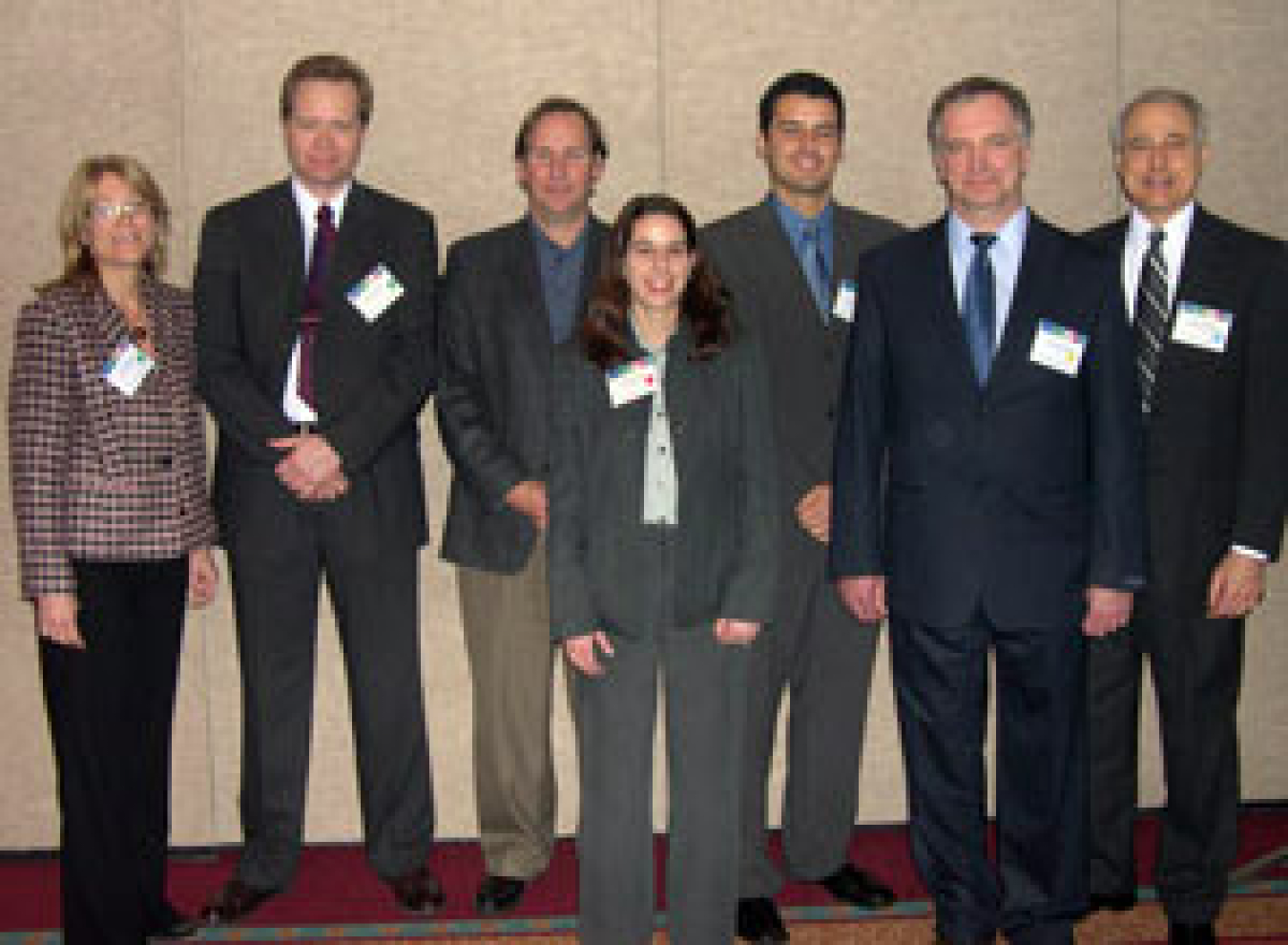
Left to right: Linda Sapochak, Paul Burrows, PNNL; Mark Thompson, University of Southern California; Monica Hansen, Cree Inc.; Brian D'Andrade, Universal Display Corp.; Alexander Usikov, Technologies and Devices International; James Brodrick, DOE.
DOE-Funded R&D Targets Efficacy and Performance Goals
On Wednesday afternoon, James Brodrick provided an overview of the DOE SSL R&D program budget and areas of focus. He concluded by recognizing five project teams for their significant achievements in 2006: Cree Inc., Pacific Northwest National Laboratory, Technologies and Devices International, Universal Display Corporation, and University of Southern California.
The next session offered brief presentations on DOE-funded SSL projects. These presentations provided attendees with a snapshot of DOE's current SSL project portfolio and provided a useful reference point for discussions and potential partnerships. In the evening, a Poster Session/Reception provided additional opportunity for discussion and information exchange about first-year DOE SSL R&D projects. The 2007 Project Portfolio provides more detail on each of the current DOE SSL projects.
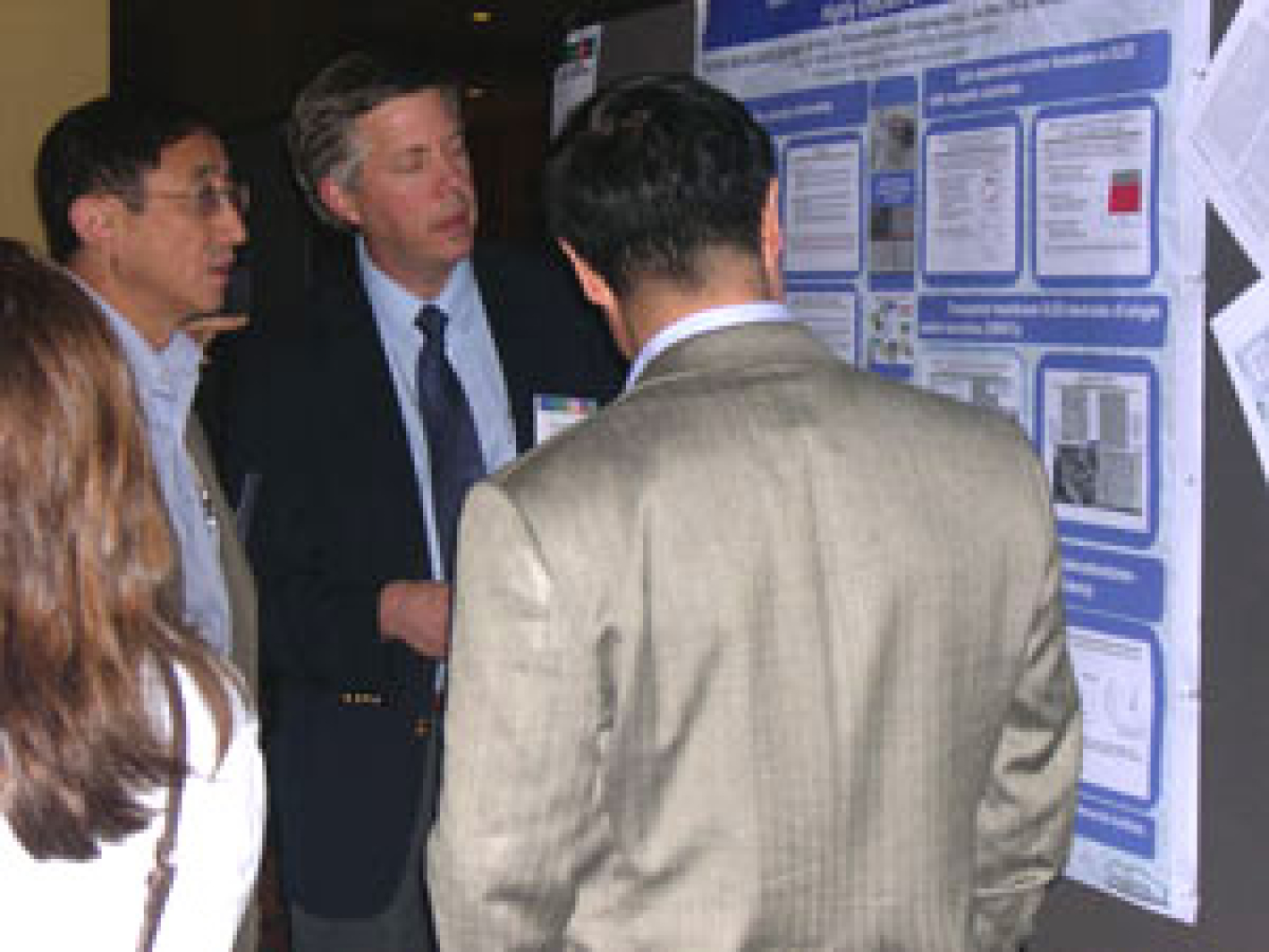
An evening poster session/reception provided an opportunity for discussion about first-year DOE SSL R&D projects.
On Thursday morning, Tim Fitzsimmons from DOE's Office of Science, Basic Energy Sciences (BES) Program, presented an overview of BES areas of focus related to SSL. In May 2006, BES hosted a workshop to focus specifically of identifying basic research needs and challenges that impact on energy-efficient SSL; the research directions identified at the workshop provided guidance for BES R&D planning. Eddie Christy, from DOE's National Energy Technology Laboratory, provided an overview of the DOE solicitation and evaluation process, including guidance on preparing a comprehensive application.
NGLIA Supports DOE SSL Program Activities
Kevin Dowling from Color Kinetics presented an update on DOE's SSL Partnership with the Next Generation Lighting Industry Alliance. In 2006, Alliance task groups provided support for a number of DOE activities, including the DOE SSL Multi-Year Program Plan updates, DOE studies, draft ENERGY STAR specifications, and the Lighting for Tomorrow design competition. Dowling concluded by inviting participants to join the Alliance and participate in advancing the SSL field.
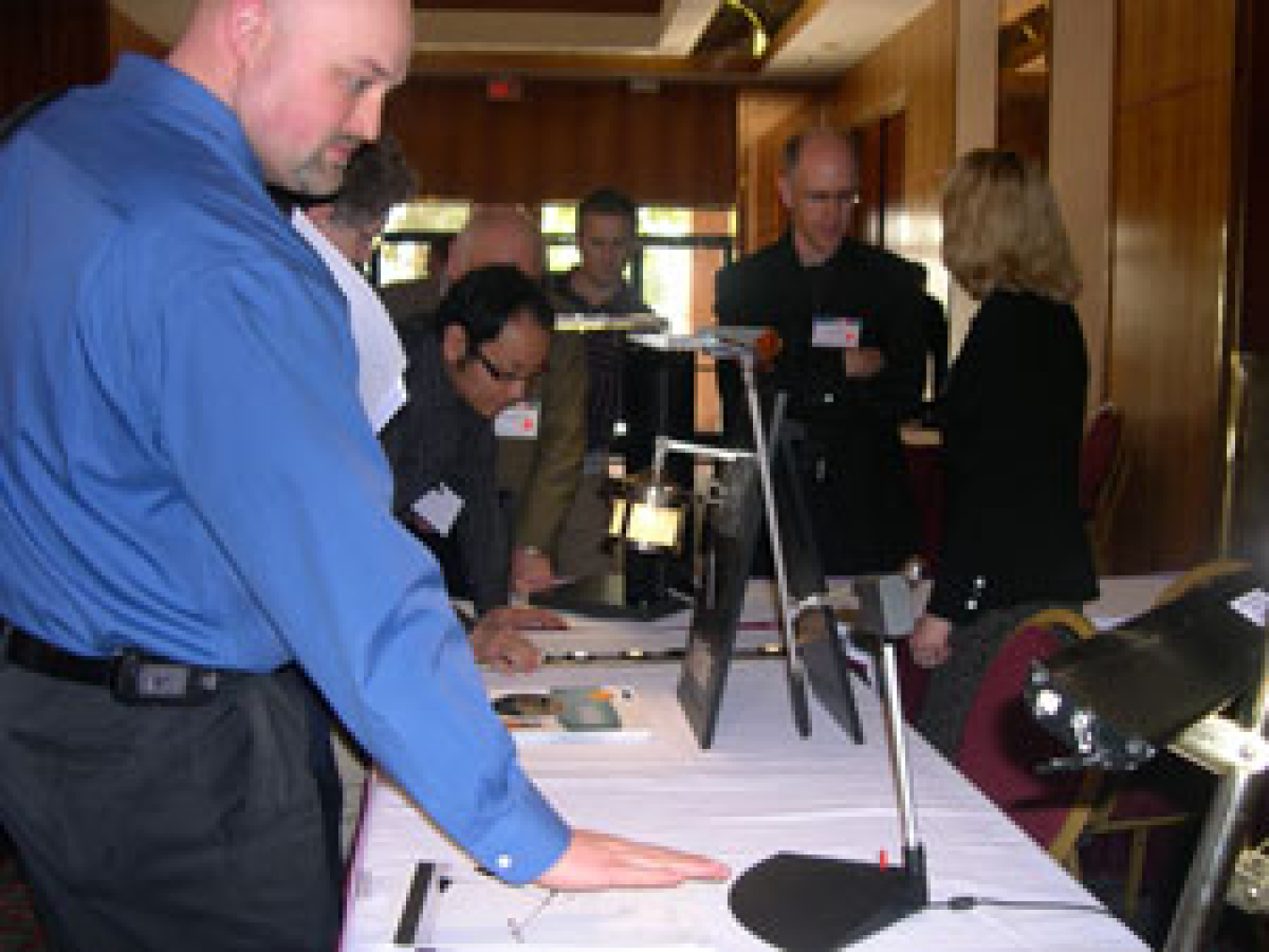
Winning fixtures from the 2006 Lighting for Tomorrow SSL competition – from American Fluorescent, Lucere Lighting, Lucesco Lighting, and Progress Lighting – were displayed at the workshop.
Lighting for Tomorrow Recognizes Winners from First SSL Competition
Lighting designer Dawn Hollingsworth, Managing Design Principal at Visual Terrain, offered attendees a valuable end-user perspective, addressing what lighting designers and architects want from SSL. Hollingsworth concluded by emphasizing the need to build bridges between the design community and the lighting industry.
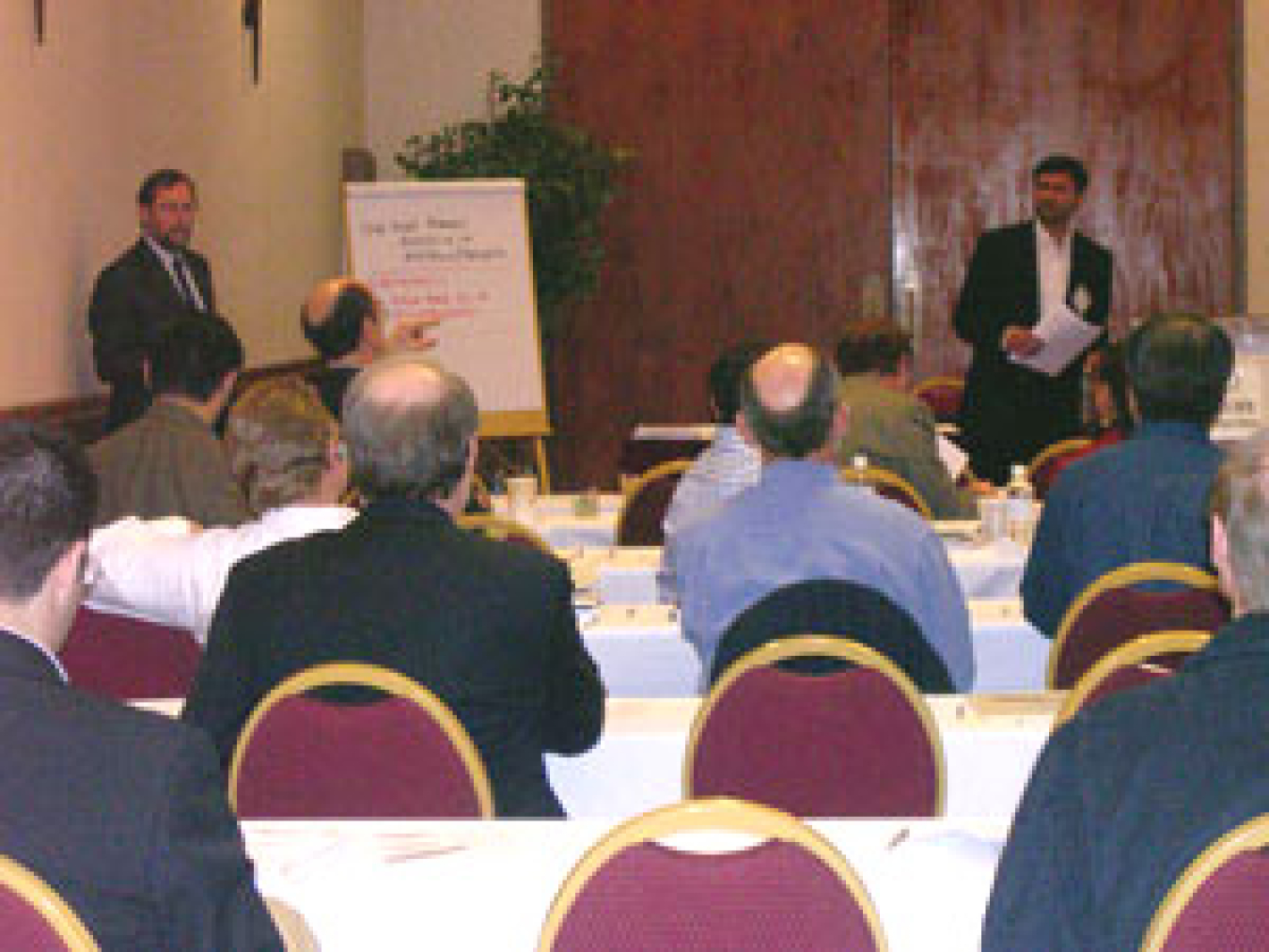
In breakout sessions, participants commented on proposed updates to the DOE R&D technology roadmap.
Participants Provide Input on DOE R&D Priorities
On Thursday afternoon, workshop participants divided into breakout sessions to review and comment on proposed revisions to the DOE SSL R&D roadmap priorities. Participants were asked to comment on proposed changes in priorities and metrics detailed in the January 2007 draft edition of the DOE SSL R&D Multi-Year Program Plan (MYPP). The input from these breakout sessions will be used to update the MYPP and guide DOE planning for R&D funding for the next 1-2 years.
Guiding Market Introduction of Energy-Efficient SSL Products
Friday morning, Gregg Ander from Southern California Edison described how new lighting technologies like SSL will play a critical role in meeting the aggressive requirements of new energy policies and regulations in California, and the role of utility initiatives and programs.
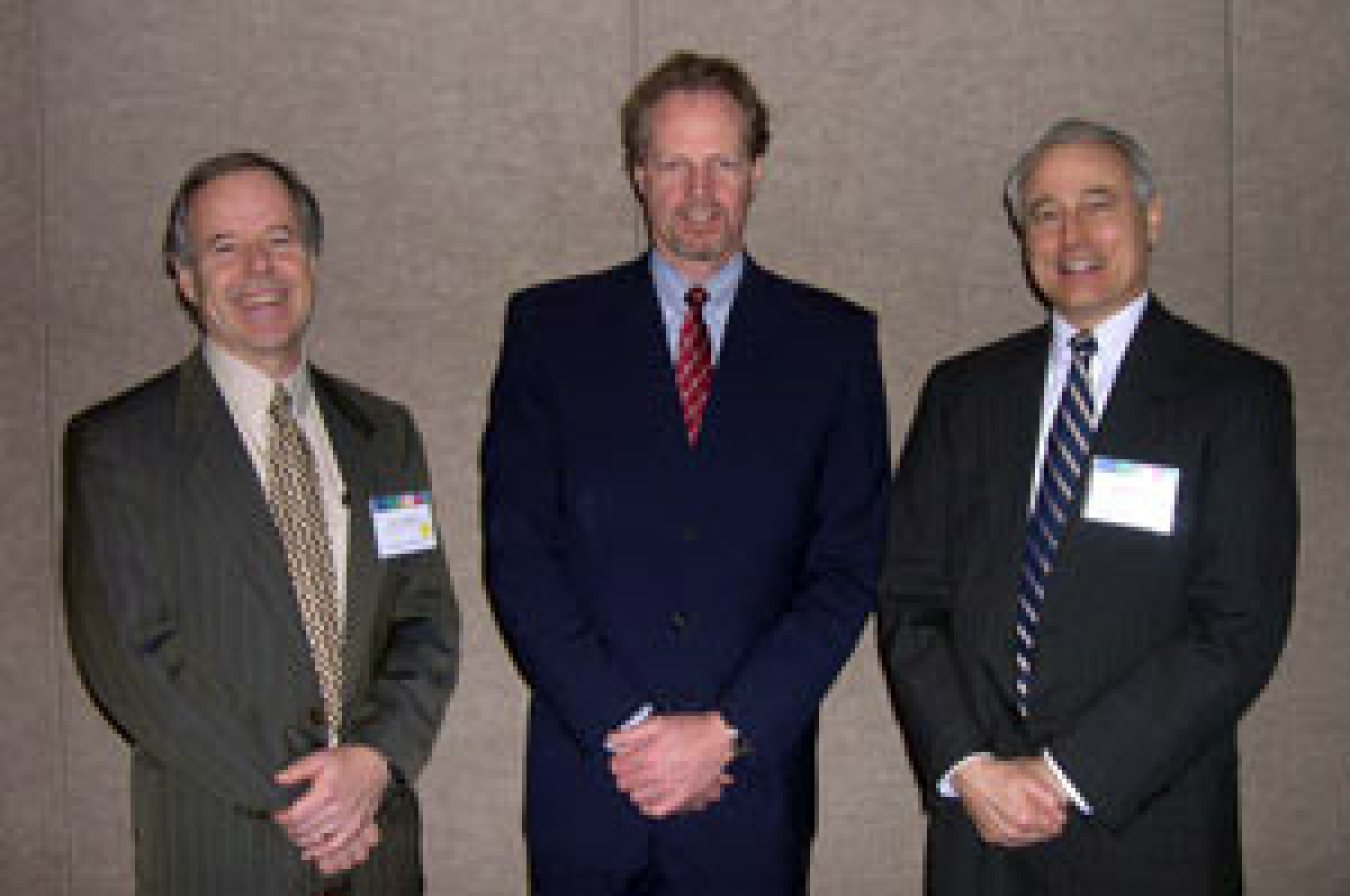
Pictured, left to right: Marc Ledbetter, Pacific Northwest National Laboratory; Gregg Ander, Southern California Edison; James Brodrick, DOE.
Marc Ledbetter, Emerging Technologies Program Manager, Pacific Northwest National Laboratory, presented key findings from a recent DOE study, Compact Fluorescent Lighting in America: Lessons Learned on the Way to Market (PDF 923 KB). Ledbetter also provided an overview of DOE market introduction strategies, including product testing, technology demonstrations, standards and test procedure support, buyer/user guidance, and design competitions.
James Brodrick, speaking for Richard Karney, ENERGY STAR Product Manager, then provided an overview of the draft ENERGY STAR criteria for SSL products, released by DOE in December 2006. DOE hosted a stakeholder meeting on February 8 to discuss the draft criteria; the final criteria will be issued in April 2007. Rolf Bergman, President of the Commission Internationale de l'Eclairage (International Commission on Illumination, or CIE) described the key areas of focus for CIE/U.S., and invited participants to join.
Brodrick concluded the three-day workshop with a reminder to participants that there are multiple opportunities to partner and participate with DOE, to help shape the future of lighting in the U.S. For ongoing updates on DOE SSL program activities, visit this website at: http://www.eere.energy.gov/buildings/ssl/.

